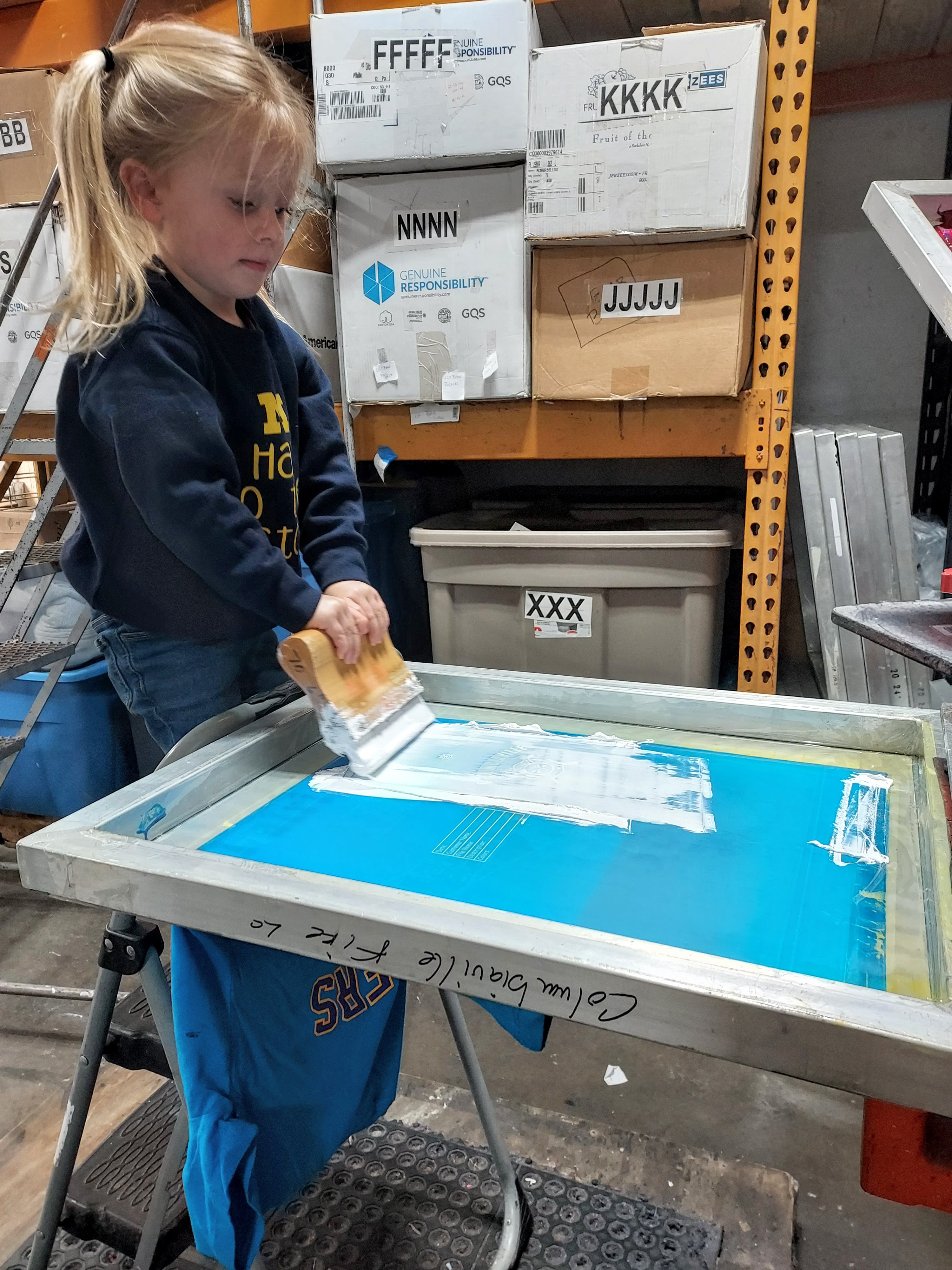-
Prepare the screen
A mesh screen is stretched onto a frame. We buy our screens already stretched and applied to aluminum frames. The mesh needs to be coated with a photo-emulsion, which is a light-sensitive material. This emulsion will harden when exposed to light, forming a stencil. The screen can be used multiple times so this process might mean cleaning off ink, removing old emulsion and degreasing.
-
Create a design
A transparency is created with the desired design. This transparency is placed on top of the emulsion-coated screen and exposed to light for a set amount of time.
-
Prepare the shirt/apparel
The material you want to print on the screen printing platen under the screen. -
Apply ink
A squeegee is used to push the ink through the open areas of the design on the screen. The squeegee forces the ink onto the shirt, creating the printed image.
-
Repeat for each color print needed
If you want to print a multi-colored design, you'll need a separate screen for each color and repeat the process, aligning the screens precisely to ensure accurate registration of the colors. -
Cure & dry the shirt
Depending on the type of ink and shirt, you need to cure the ink at a certain temperature (usually around 250-300 degrees) for a set amount of time.As I was writing this, it makes it look like quite the process... And it is! Even though this is a long process we believe it is the superior option when compared to DTG or DTF for larger orders and long-term durability. It produces vibrant, long-lasting prints that can withstand many washes without fading or cracking. Unlike DTG and DTF, which are better suited for short runs or highly detailed full-color images, screen printing is more cost-effective and delivers bold, high-quality results on a wide range of fabrics. Its versatility and durability make it the go-to choice for professional, long-lasting apparel printing.

P.I.T.
Our youngest Printer In Training - Ainsley. If you've been around the shop since 2020 you've seen this cute little face. Most of the time, she's a great help and does great work for a sucker or freeze pop.
0 comments